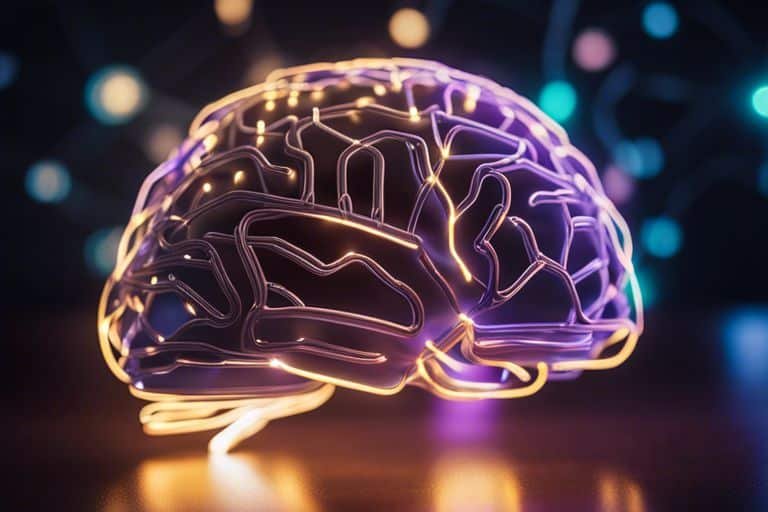You may have wondered what keeps some people motivated for the long haul while others seem to give up easily. The answer lies in the fascinating concept of neuroplasticity – the brain’s ability to reorganize itself by forming new neural connections. In this blog post, we explore into the role of neuroplasticity in sustaining long-term motivation, exploring how our brains adapt and change to help us stay focused and driven towards our goals. Get ready to uncover the secrets behind lasting motivation!
Key Takeaways:
- Neuroplasticity is necessary in sustaining long-term motivation: Neuroplasticity refers to the brain’s ability to reorganize and adapt over time. It plays a crucial role in shaping our behaviors, habits, and motivations.
- Practice and repetition help strengthen neural pathways: Engaging in activities consistently can create new neural connections and reinforce existing ones, making it easier to maintain motivation in the long run.
- Reward systems can boost neuroplasticity and motivation: Positive reinforcement and rewarding experiences can stimulate the release of dopamine in the brain, enhancing neuroplasticity and reinforcing motivated behavior.

Defining Neuroplasticity
Before delving into the role of neuroplasticity in sustaining long-term motivation, it is crucial to understand what this term encompasses. Neuroplasticity refers to the brain’s remarkable ability to reorganize itself by forming new neural connections throughout life. This process allows the brain to adapt to new experiences, learn new information, and recover from injuries.
The Concept of Neuroplasticity
Neuroplasticity challenges the traditional notion that the brain’s structure and function are fixed after a certain age. Instead, research has shown that the brain retains its plasticity well into adulthood, continuously reshaping itself in response to internal and external stimuli. This adaptability plays a vital role in cognitive processes, memory formation, and skill acquisition.
How Neuroplasticity Differs from Neurogenesis
Neuroplasticity and neurogenesis are often used interchangeably, but they refer to distinct processes within the brain. Neuroplasticity involves the brain’s ability to reorganize neural pathways, while neurogenesis refers specifically to the creation of new neurons. While neurogenesis primarily occurs in specific brain regions such as the hippocampus, neuroplasticity is a more widespread phenomenon that occurs throughout the brain.
The Science Behind Motivation
You’ve probably heard the phrase “motivation is key” countless times, but have you ever wondered about the science behind what drives us to stay motivated in the long run? Understanding the intricate workings of our brain can shed light on how we sustain motivation over time.
The Role of Dopamine in Motivation
One crucial player in the neurobiology of motivation is dopamine, often referred to as the “feel good” neurotransmitter. Dopamine is released in response to pleasurable activities, reinforcing behaviors that lead to rewards. This reinforcement mechanism makes us more likely to repeat actions that are associated with positive outcomes, thereby fueling our motivation to pursue our goals.
The Impact of Reward Systems on Behavior
Systems theory explains how our behaviors are influenced by the rewards we receive. When we engage in tasks and are rewarded for our efforts, our brains release dopamine, reinforcing the connection between the behavior and the positive outcome. This reinforcement loop strengthens our motivation to continue the behavior, creating a cycle of sustained effort and reward.
Behind the scenes, various brain regions, such as the prefrontal cortex and the nucleus accumbens, work together in orchestrating this complex interplay of rewards and motivation. The prefrontal cortex is responsible for decision-making and goal-setting, while the nucleus accumbens plays a role in processing rewards and reinforcing behavior. Together, these regions form a neural network that drives us to pursue our goals with vigor and determination.
Neuroplasticity and Motivation
Now let’s investigate into the fascinating world of neuroplasticity and its profound impact on sustaining long-term motivation. Neuroplasticity, the brain’s ability to reorganize itself by forming new neural connections, plays a crucial role in shaping our motivational pathways.
How Neuroplasticity Influences Motivational Pathways
Motivational pathways in the brain are heavily influenced by neuroplasticity. When we engage in activities that require sustained motivation, such as learning a new skill or pursuing a long-term goal, our brain undergoes changes at the neural level. With repetition and practice, the brain strengthens the neural connections associated with motivation, making it easier for us to stay focused and driven towards our objectives.
The Interplay Between Neurotransmitters and Motivation
Interplay between neurotransmitters and motivation is a fascinating area of study in neuroscience. Neurotransmitters, chemical messengers in the brain, play a vital role in regulating our motivation levels. Dopamine, often referred to as the ‘feel-good’ neurotransmitter, is closely linked to the brain’s reward system and plays a significant role in motivating us to pursue rewarding activities.
With a delicate balance of neurotransmitters such as dopamine, serotonin, and norepinephrine, our brain regulates motivation, goal-setting, and decision-making processes. Understanding how these neurotransmitters interact with motivational pathways can offer valuable insights into sustaining long-term motivation and achieving success in various aspects of life.
Sustaining Long-term Motivation
The Importance of Goal-Setting in Motivation
Keep in mind that setting specific, achievable goals is crucial for maintaining motivation over the long term. Goals provide direction and purpose, helping to keep you focused and on track even when faced with challenges or setbacks. When you have clear goals in place, your brain is more likely to stay engaged and motivated to work towards them.
Strategies for Maintaining Motivation Over Time
For sustaining long-term motivation, it is crucial to employ various strategies to keep the momentum going. One effective approach is to break down your goals into smaller, manageable tasks. By achieving these smaller milestones, you can celebrate your progress and stay motivated to continue working towards your ultimate goal. Additionally, surrounding yourself with a supportive community or finding an accountability partner can also help you stay motivated and accountable in the long run.
Sustaining motivation over time requires continued effort and commitment. It can be helpful to periodically reassess your goals and adjust them as needed to ensure they remain challenging yet attainable. By staying adaptable and open to change, you can maintain a high level of motivation and continue making progress towards your objectives.
Importance
Bear in mind, maintaining motivation over the long term is a dynamic process that involves both setting clear goals and implementing effective strategies to stay on course. By understanding the importance of goal-setting and utilizing strategies to sustain motivation over time, you can increase your chances of achieving long-term success and fulfillment.
The Role of Practice and Repetition
Many scientific studies have shown that practice and repetition play a crucial role in shaping neural connections in the brain. When we repeatedly perform a task or engage in a specific behavior, it triggers a process called neuroplasticity, where the brain physically changes and adapts to become more efficient at that particular activity. This process involves strengthening the connections between neurons, creating neural pathways that become more efficient with each repetition.
How Repetition Shapes Neural Connections
Any time we practice a new skill or behavior, whether it’s playing a musical instrument, learning a new language, or developing a healthier habit, our brains undergo changes to accommodate these activities. Through repetition, neural pathways associated with the desired behavior are reinforced, making it easier for signals to travel along these pathways. As a result, the more we practice and repeat a behavior, the more ingrained it becomes in our brain’s circuitry, leading to improved skill acquisition and increased motivation to continue the behavior.
The Power of Habituation in Motivation
Practice is key to habit formation, and habits play a significant role in sustaining long-term motivation. When a behavior becomes habitual through practice and repetition, it requires less conscious effort to maintain. Habits are automatic responses to specific cues, and once established, they can drive sustained motivation by reducing the mental energy needed to engage in a particular activity. By harnessing the power of habituation through consistent practice, individuals can maintain their motivation levels over extended periods, even when faced with challenges or setbacks.
Power of habituation lies in its ability to automate behaviors, thereby conserving cognitive resources and minimizing the need for willpower. By consistently practicing desired behaviors, individuals can cultivate habits that support long-term motivation and goal attainment.
Overcoming Obstacles to Motivation
The Impact of Stress on Motivation
The demands of everyday life can often lead to stress, which can have a significant impact on our motivation levels. When we are under stress, our brains release cortisol, the primary stress hormone, which can interfere with our ability to focus, make decisions, and stay motivated. In the long term, chronic stress can deplete our mental and physical energy, making it challenging to sustain motivation towards our goals.
Strategies for Building Resilience
Any journey towards sustaining long-term motivation requires building resilience to overcome obstacles along the way. Resilience is the ability to adapt and bounce back from setbacks, and it plays a crucial role in maintaining motivation when faced with challenges. Engaging in activities that promote physical and mental well-being, such as regular exercise, mindfulness practices, and seeking social support, can help strengthen resilience and enhance our ability to stay motivated despite adversity.
To navigate the ups and downs of the motivation journey, it’s crucial to cultivate self-compassion and embrace a growth mindset. Self-compassion involves treating oneself with kindness and understanding during difficult times, while a growth mindset focuses on viewing challenges as opportunities for growth and learning. By incorporating these strategies into our daily lives, we can develop the resilience needed to sustain long-term motivation and achieve our goals.
Conclusion
Presently, we have uncovered the intricate relationship between neuroplasticity and sustained long-term motivation. It is evident that our brain’s ability to adapt and rewire itself plays a crucial role in maintaining our motivation levels over an extended period. By understanding how our brain can change in response to our behaviors and experiences, we can leverage this phenomenon to cultivate and sustain our motivation for the long haul.
Neuroplasticity offers us a glimpse into the remarkable capacity of our brain to evolve and transform, ultimately shaping our motivations and driving us towards our goals. As we continue to unravel the mysteries of our brain’s plasticity, we are presented with endless possibilities to harness this power and nurture our long-term motivation for a fulfilling and rewarding journey ahead.
FAQ
Q: What is neuroplasticity and how does it relate to long-term motivation?
A: Neuroplasticity is the brain’s ability to reorganize itself by forming new neural connections. In the context of sustaining long-term motivation, neuroplasticity allows individuals to adapt, learn, and develop new habits and behaviors that support their goals and aspirations.
Q: How can neuroplasticity be harnessed to enhance long-term motivation?
A: By engaging in activities that challenge the brain, such as learning a new skill or practicing mindfulness, individuals can stimulate neuroplasticity and strengthen neural pathways associated with motivation and goal attainment. Consistent practice and repetition are key to solidifying these changes in the brain.
Q: What role do emotions play in the relationship between neuroplasticity and long-term motivation?
A: Emotions have a significant impact on neuroplasticity and motivation. Positive emotions, such as passion and excitement, can enhance neuroplasticity and reinforce motivational behaviors. On the other hand, negative emotions, like stress and self-doubt, can hinder neuroplasticity and impede long-term motivation. Cultivating a positive emotional state through self-care, social support, and gratitude can help maintain motivation over time.








